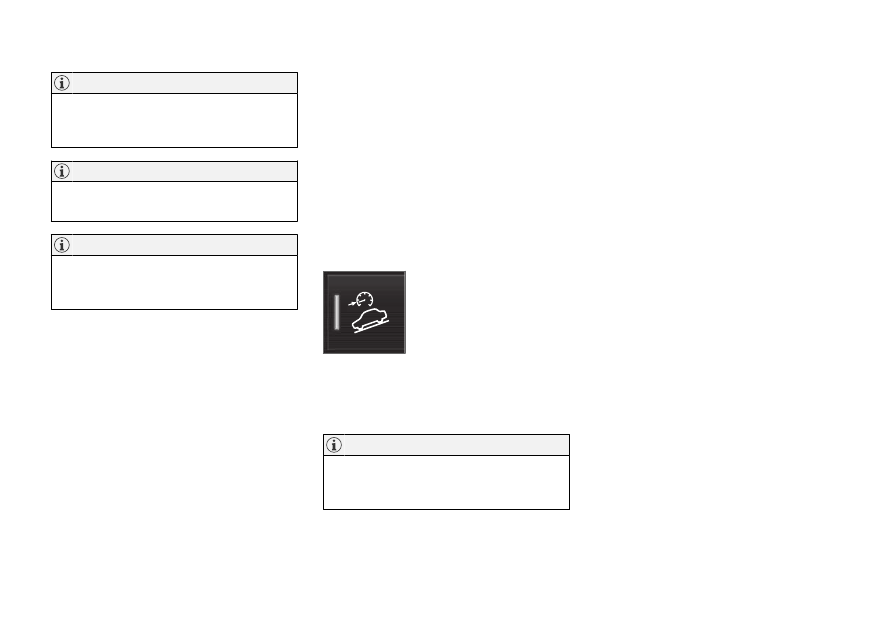Volvo XC90 (2019 year). Manual - part 27

||
STARTING AND DRIVING
* Option/accessory.
452
When LSC with HDC is activated, the feel of
the accelerator pedal and engine response
will change.
This drive mode is not designed to be used
for normal street driving.
The function is deactivated when driving at
high speeds and must be reactivated at lower
speeds if so desired.
Related information
•
Activating and deactivating Low Speed Con-
trol* using the function button (p. 452)
•
•
Hill Descent Control* (p. 453)
•
All Wheel Drive (AWD)* (p. 438)
Activating and deactivating Low
Speed Control* using the function
button
There is a function button for driving at low
speeds with
Hill Descent Control
in the center
display's Function view if the vehicle is not
equipped with a drive mode control in the tunnel
console.
Selecting Low Speed Control in the
center display's Function view
–
Tap the
Hill Descent Control
button to
activate or deactivate the function.
> An indicator light in the button will illumi-
nate when the function is activated.
When the engine is switched off, the function will
be automatically deactivated.
The function is deactivated when driving at
high speeds and must be reactivated at lower
speeds if so desired.
Related information
•
•